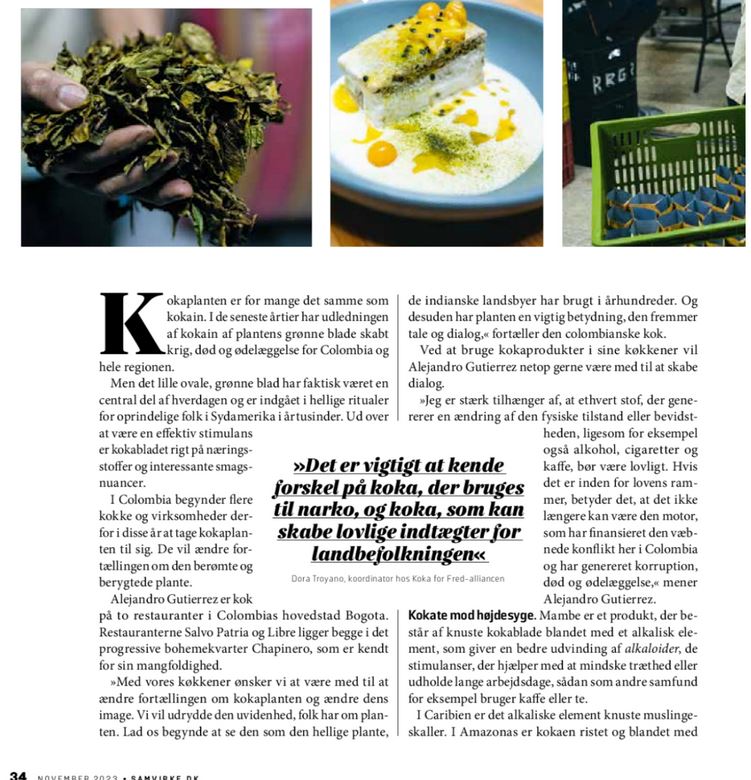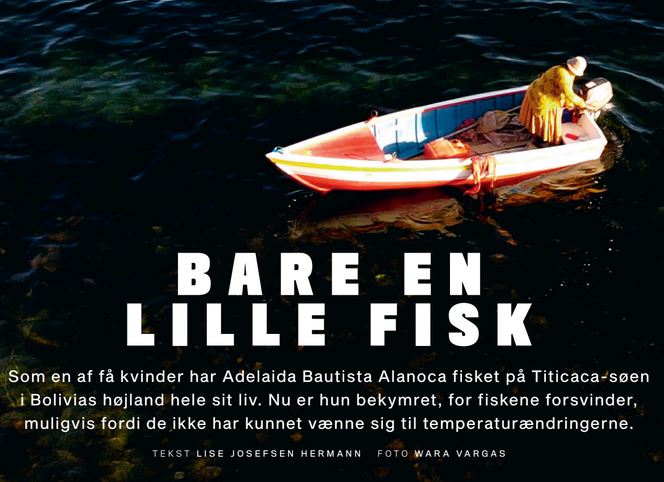The successful completion of last year’s ambitious project, “South Voices in Mainstream Danish Media”, has inspired DDRN to try to define a just as ambitious follow-up project.
“South Voices in Danish Mainstream Media” was an ambitious project, which ran from the summer of 2023 until the spring of 2024. It was initiated and run by Danish Development Research Network (DDRN) and funded by the OpEn Fund of the Danish Foreign Ministry, and the purpose was to introduce works with “South angles” of professional journalists and photographers from the Global South to a broader Danish audience.
Six reporters and photographers from the Global South (Uganda, India, Chile, Ecuador, Bolivia and Colombia) who were known for their professionalism by DDRN from earlier cooperation, were asked to contribute with pitches from the beginning, and through three rounds we have chosen three contributions from each of them. The communication with the South contributors was carried out by the DDRN secretariat. In the end, we were able to afford two more contributions, so the project resulted in altogether twenty articles/photo-series.
Seven Danish media were associated with the project from the beginning, later supplemented with two more. Articles and photos were published or will be published in magazines like Ud&Se and Samvirke and Sjællandske Medier’s weekend magazine, newspapers like Politiken, Information, Kristeligt Dagblad and Jyllands-Posten, as well as websites like POV International and økonu.dk.
From the beginning, we have consciously been targeting far broader target groups among the Danish public, than the special interest media of the development and South issues sector are normally targeting. As prescribed in the OpEn program, we have been targeting people who are neutral (not necessarily positive) towards development efforts in the South as well as people who know very little about conditions in the Global South. We have chosen the participating Danish media from this viewpoint, and all of them have published at least one South contribution.
I have earlier in my life worked as foreign editor as well as foreign correspondent for Danish news media, and I was in charge of communication and cooperation with leading editors of the involved Danish media. They were generally kind, cooperative, positive towards the project and its purpose – but very busy.
It became a major challenge that the involved news media understandably were forced to prioritize grave international news that have dominated the news during 2023 and 2024, especially the Gaza War and the Ukraine War. The space for foreign news has already been diminished in recent years, and these events made potential non-breaking contributions from the Global South even more a niche priority than they would otherwise have been. Several of our articles were accepted by the news media, but in the end they had to wait in queue for months before being published.
Also, the fact that three of our six “South Voices” were photographers collided with the reality that very few Danish media are able to give ambitious photo series a proper showing. Even though the contributions were excellent, some of these series surfaced in a few cases as text-dominated articles in the chosen media, even though the South voice actually was meant to be expressed primarily through the pictures.
I gave most of the articles a rather tough editing, and some of the texts were considerably shortened. The South angles were of course kept, but otherwise I tried – based on my experience – to present the material in a way which looked like the way Danish editors – and Danish media consumers – normally meet interesting material from abroad. In the end, we believe we were able to present a number of strong and interesting stories that enriched the picture in Denmark of conditions in the Global South.
Good examples of published contributions which have introduced significant Southern angles that would otherwise not have been visible in Danish media are the following:
- Marta Apablaza Riquelme’s interview from Chile with the Danish film-maker Lone Scherfig, published by Sjællandske Medier, October 21st, 2023. It has its Danish angle, but no Danish reporter would have been able to make the same interview. It takes to a remarkable degree its starting point in the local area’s geography and history.
- Charlie Cordero’s photo report about the use of coca in food in Colombia, published by Samvirke, November 2023. The report is focusing on honest people trying to make a living, showing solidarity with them. A very different angle on the coca isuue than we usually see in Western media.
- Wara Vargas’ three photo series about a local fisherwoman at the Titicaca Lake, published by “Ud&Se”, September 2023, a female farmer, becoming a politician, published by Sjællandske Medier, February 17th, 2024, as well as the Chipaya people suffering from climate change, published by POV International, December 21st, 2023. Wara Vargas is indigenous herself, and her pictures reveals the closeness of an insider to the issues.
- William Odinga Balikuddembe’s article about how Uganda farmers’ response to climate change is undermined by the country’s poor seed system, published by POV International, February 8th, 2024. A very important local issue is made interesting and relevant for a North audience through concrete and detailed explanations.
Around the time of the project’s third and final round, we invited Danish media and development sector people and everybody else to a public evaluation meeting in Copenhagen. It took place January 3rd, 2024. Because of terrible weather and illness, only two of the involved editors participated, but the rest sent valuable input. The evening itself developed into a constructive and inspiring exchange with the participants who were mostly professionals and media people involved with the development field.
Based on our experiences with the project, we hope to be able to carry them into a new version of the South Voices project during the coming year. Originally, it wasn’t meant to be more than a one-time event, but the way it has evolved would make a second version relevant, in which we build on what we have learned. We also hope to involve new media outlets as well as new and younger target groups in Denmark.







